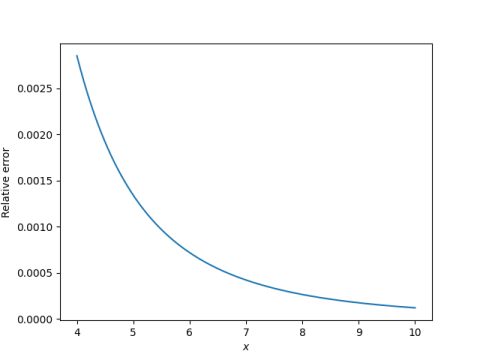The 1/e heuristic
The previous post looked at the FWHM (full width at half maximum) technique for approximating integrals, applied to the normal distribution.
This post is analogous, looking at the 1/e heuristic for approximating integral. We will give an example in this post where the heuristic works well. The next post will give an example where the heuristic works poorly.
The 1/e heuristicIn a function decays roughly exponentially, one way to approximate its integral is by the area of a rectangle with height equal to the maximum value of the integrand, and with base extending to the point where the integrand decreases by a factor of e, i.e. where its value is 1/e times where it started. This technique is discussed in the book Street-fighting Mathematics.
This technique gives the exact value when integrating exp(-x) from 0 to infinity, and so it seems reasonable that it would give a good approximation for integrals that behave something like exp(-x).
First exampleFor the first example we will look at the integral
for x > 0. We're especially interested in large x.
To find where the integrand has dropped by a factor of e we need to solve
exp(1/t - t) = exp(1/x - x - 1)
for fixed x. Taking logs shows we need to solve
t^2 - at - 1 = 0
where
a = x + 1/x - x + 1.
Applying the quadratic formula and taking the positive solution gives
We approximate our integral by the area of a rectangle with height
exp(x + 1/x)
and width
(a + 1/a) - x.
The plot below show that not only is the absolute error small, as one would expect, the relative error is small as well and decreases rapidly as x increases.
